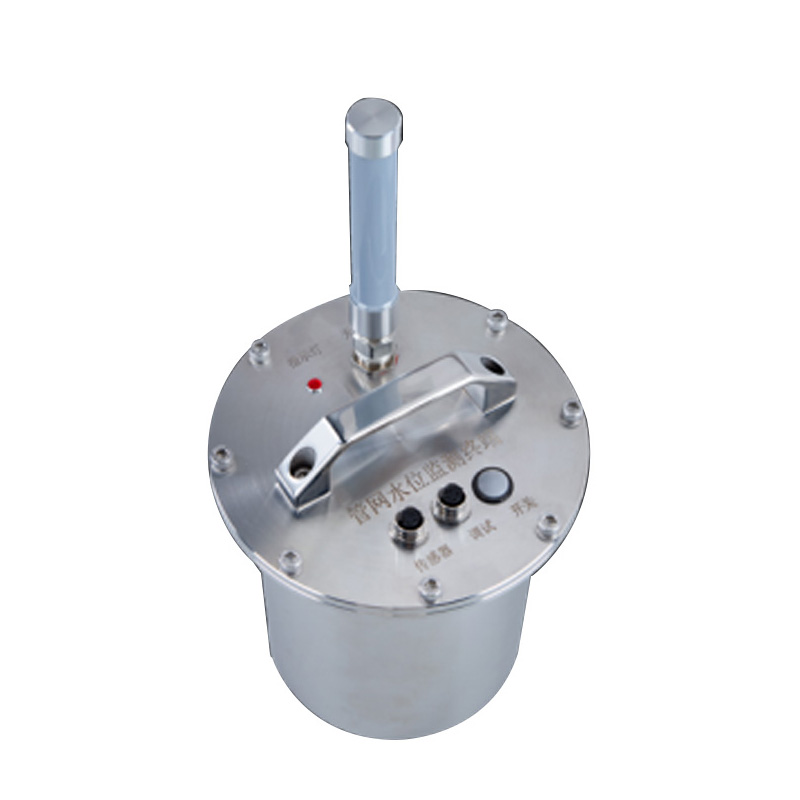Tianqiong Sensor IOT Technology Co., Ltd
Sales Manager:Ms. Emily Wang
Cel,Whatsapp,Wechat:+86 15898932201
Email:info@fengtutec.com
Add:No. 155 Optoelectronic Industry Accelerator, Gaoxin District, Weifang, Shandong, China

Sales Manager:Ms. Emily Wang
Cel,Whatsapp,Wechat:+86 15898932201
Email:info@fengtutec.com
Add:No. 155 Optoelectronic Industry Accelerator, Gaoxin District, Weifang, Shandong, China

Model:FT-GSW1
Brand:tianqiong
1.Wastewater level monitoring in sewage networks Product introduction
Wastewater level monitoring in sewage networks equipment is equipped with radar or pressure sensors to collect and transmit real-time data of water levels.
The GSW1 series integrated level meter adopts a radar and pressure integrated design, and can use radar, pressure or one of the water level sensors at the same time.
Radar measurement adopts the current advanced range measurement mode - FMCW frequency modulation continuous wave mode, which can replace laser range measurement radar, industrial ultrasonic range measurement radar and other products.
It also supports optional input pressure sensors, which can measure the water level of the pipeline network through the pressure and radar dual sensor measurement modes, and ensure the accuracy of the water level gauge measurement through algorithm analysis.
The product is small in size and compact in structure, and is suitable for a variety of distance measurement application scenarios such as pipeline network and outdoors.
2.Advantages and features of Wastewater level monitoring in sewage networks
Contactless installation design, compact size and compact structure
Boast battery, no need to consider power supply
High accuracy, low power consumption, strong anti-interference ability, easy installation
Many applicable scenarios: lakes, rivers, mountain torrent warning, reservoirs, sewage pipelines and other water level monitoring
3.Wastewater level monitoring in sewage networks technical parameters
Power supply: standard equipped with 35AH ternary lithium battery
Radar sensor (configured according to needs): built-in 120G radar sensor module
Transmission frequency: 120GHz
Output power (EIRP): 13~20dBm
Beam width (-3dB): 3° horizontally, 3° vertically
Range measuring range: 0.2~40m
Measuring accuracy: ±10mm
Resolution: 1mm
Response time: 3s
External sensor: external pressure sensor (range measurement range: 0.1-10m, measurement accuracy: 0.5%FS, resolution: 1mm).
Storage: Built-in 64M data storage chip, which can store 100,000 pieces of data, and the storage time is ≥10 years; a built-in ferroelectric storage chip is used to store configuration data, and the number of erases is ≥10 billion times.
Wireless communication: supports NB/4G wireless transmission, default NB transmission, and optional 4G.
Status acquisition: Built-in current acquisition chip can collect real-time current of the device.
Local upgrade: Support local RS485 upgrade program.
Working mode: Supports continuous working mode and low power working mode.
1.Continuous working mode: In this mode, the device continuously samples and uploads uninterruptedly, and the sensor data is collected regularly, and the acquisition period can be set; data is reported regularly, and the reporting period can be set.
2.Low-power working mode: In this mode, the CPU control sensor is powered on at a time, data is collected, and the power-on period and power-on time can be set; the equipment is reported regularly, and the reporting period can be set, and the reporting method supports real-time reporting and unified reporting.The real-time reporting mode refers to the data reported immediately after the equipment collects data.The unified reporting means that the data is reported in a unified manner after the equipment collects multiple times.The corresponding parameters can be configured.
Battery life: In 10 minutes collection/1 hour transmission mode, working time ≥12 months
Communication interface: 1 NB-iot or 4G wireless transmission interface and 1 RS485 interface are standard.
Communication protocol: Data uploading and factory-free support for our AN-UNION protocol, and can be optionally equipped with the SL651-2014 Hydrological Monitoring Data Communication Regulations or the "HJ 212-2017 Online Pollutant Monitoring (Monitoring) System Data Transmission Standard"
Remote configuration: The platform issues configuration instructions/parameters, and automatically modify configuration information after the terminal connects to the platform.
Antenna type: Waterproof fiberglass high gain antenna
Housing material: 304 stainless steel
Dimensions: Φ174mm*H206mm (excluding antennas)
Protection level: IP68
Working temperature: ﹣30~85℃
Storage temperature: ﹣40~85℃
Meteorological Instruments for Solar Energy is a professional device that integrates the monitoring functions of six key meteorological parameters: temperature, humidity, wind speed, wind direction, air pressure, and rainfall. Its core highlight lies in its highly integrated and ingenious design. It...
Reservoirs are important projects for water resource regulation, and discharge operations directly affect the hydrological conditions of downstream rivers. Discharge is usually divided into different situations such as regular discharge, flood control discharge and emergency discharge. Regular disch...
In the era of great health, the intelligent health care industry is thriving, and people are paying increasing attention to a healthy living environment. Negative oxygen ions, known as the "vitamin of the air," are becoming the focus of the intelligent health care field. The Negative oxyge...
In tourist attractions, air quality is one of the important factors attracting visitors. As a key indicator for measuring air quality, negative oxygen ion concentration has received increasing attention from more and more scenic spots. Known as the "vitamin of the air," negative oxygen ion...